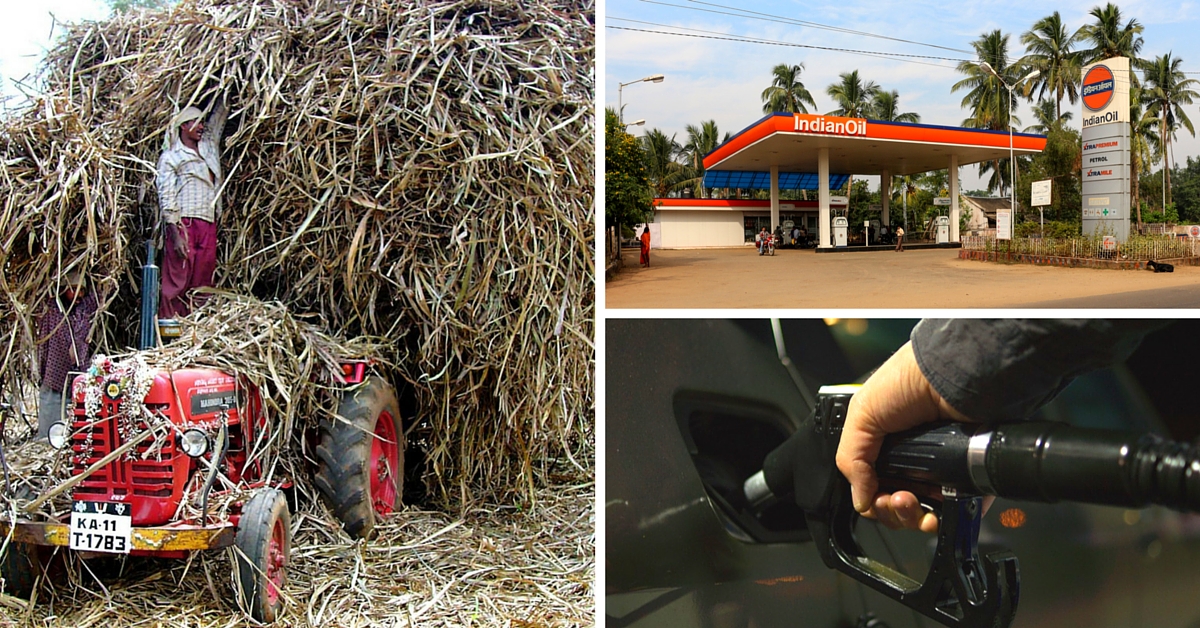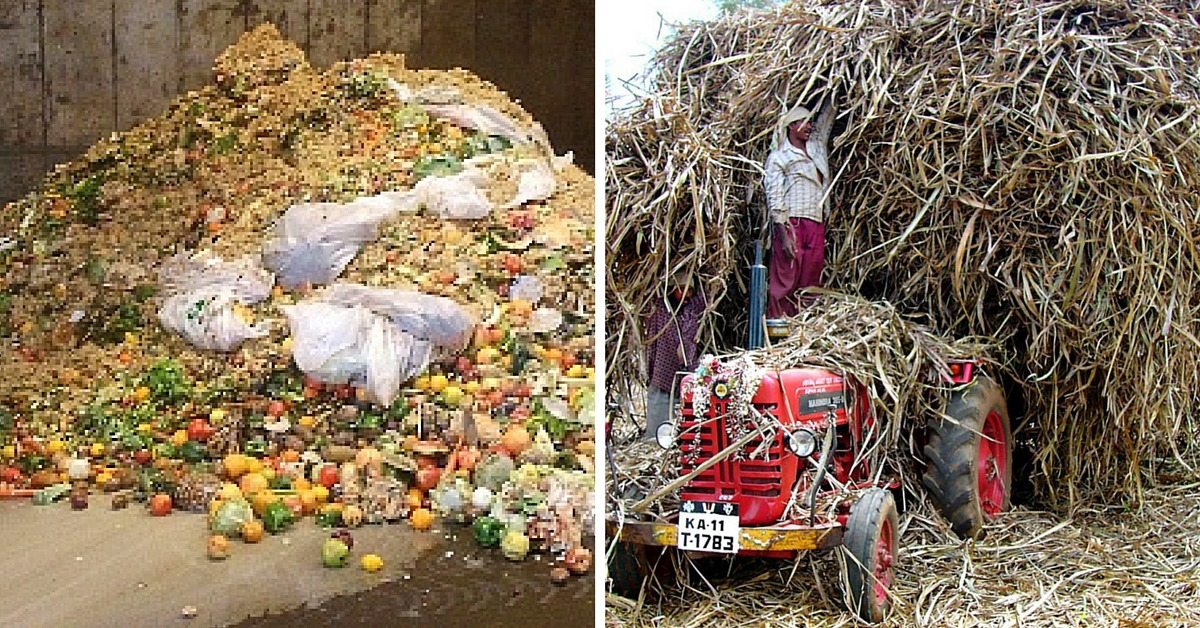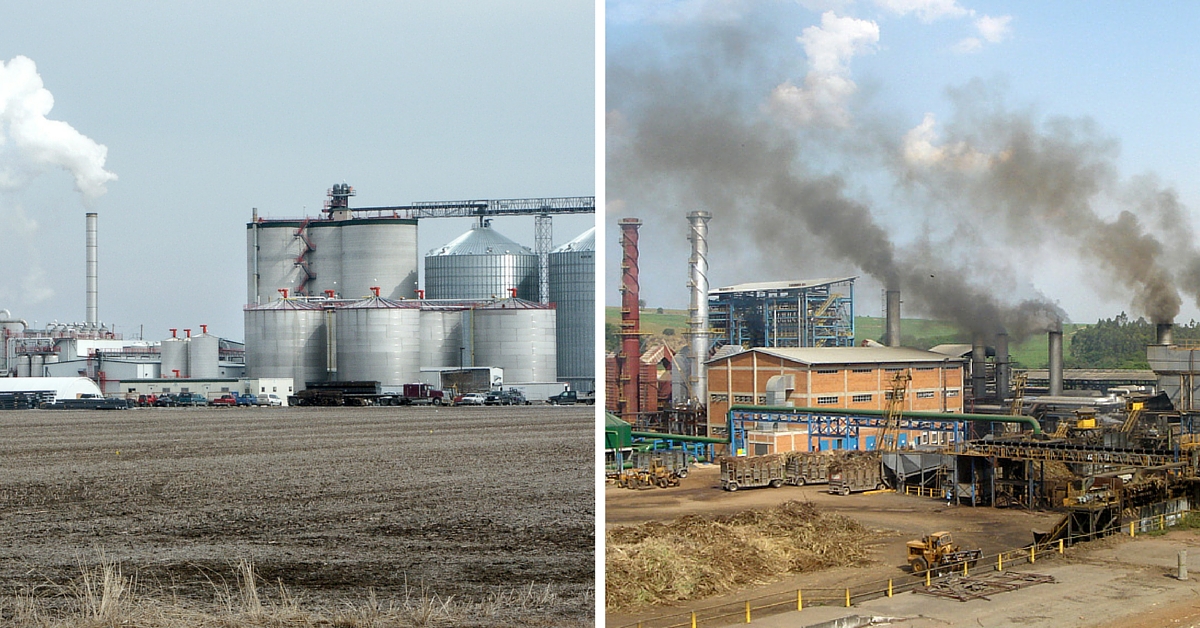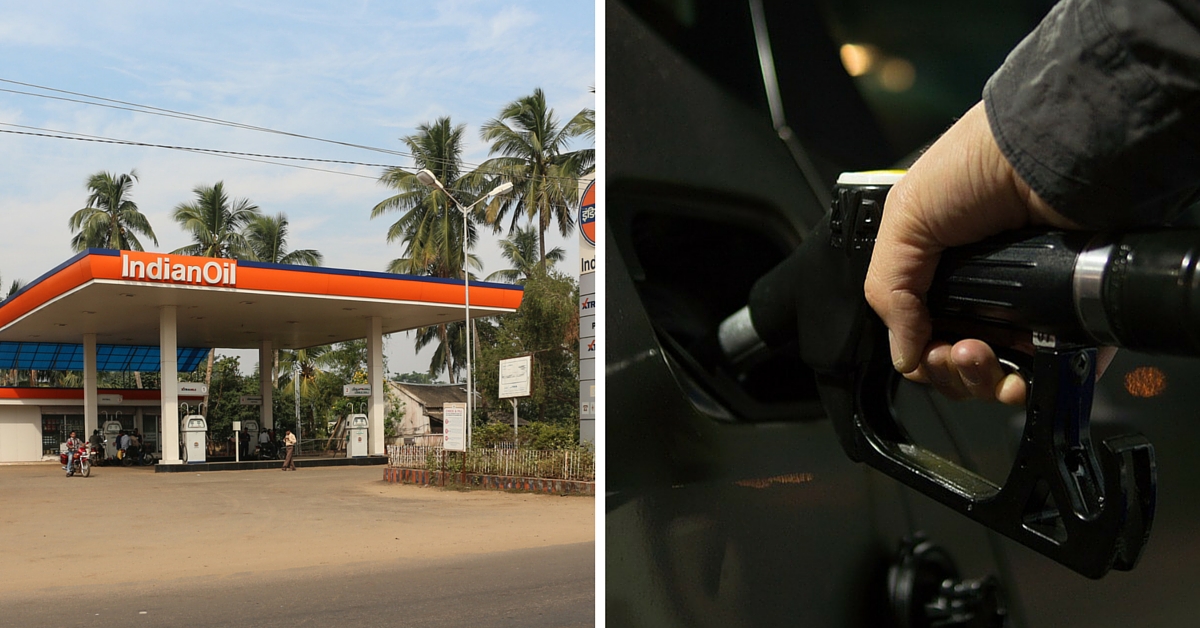This New Tech Could Convert India’s 300 Million Tonnes Farm Waste to 100 Billion Tonnes Fuel
In Uttarakhand, a new biofuel conversion plant piloted in Kashipur can convert all kinds of agricultural waste into bioethanol. This unique technology has many benefits over other biofuel plants.

In Uttarakhand, a new biofuel conversion plant piloted in Kashipur can convert all kinds of agricultural waste into bioethanol. This unique technology has many benefits over other biofuel plants that convert sugarcane or corn into biofuel.
Agricultural waste is a by-product that is used in some places as fodder for animals. But a majority of farmers do not realize its potential — the waste is thrown into ditches and fire set to it. This practice only adds to air pollution and is harmful for the environment in general.
But a recent development, spearheaded by scientists from the Department of Biotechnology in India, could turn this waste into treasure. Science Minister Harsh Vardhan inaugurated a new kind of biofuel plant on April 22.
At this plant, agricultural waste is converted into a form of alcohol – ethyl alcohol or bioethanol – which can be used as biofuel, to replace imported fuel.

Source: pixabay.com
The demonstration plant was piloted in Kashipur, Uttarakhand, in the premises of India Glycols Limited, a petrochemical company that aims at being green and clean.
The Institute of Chemical Technology (ICT) worked in tandem with DBT to build the technology for this plant at Rs 35 crores, according to the Economic Times.
Ethanol production from natural materials isn’t a novel concept in itself. Before this, technology to convert sugarcane and corn maize into ethanol existed. This kind of ethanol is called first generation ethanol (1G ethanol). But converting agricultural waste into ethanol is a fairly new technology – and this ethanol is called second generation or 2G ethanol.
Why 2G Wins Over 1G
Currently, the total capacity of 1G ethanol plants installed in the country comes up to only 2.5 billion litres of fuel production. Oil-based industries, on the other hand, have a demand of 5 billion litres annually. But the answer isn’t to build more 1G ethanol plants. Ultimately, such an increase to meet the demand would impact the sugar market, livestock that depend on bagasse (the leftovers after extracting sugarcane juice) for food, and land used for sugarcane production.
But 2G ethanol comes from agricultural waste – which is available in plenty and is a natural byproduct that does not need to be specially produced.

Source: Left, right
This the best example of recycling and reusing, and there’s no need to burn away more waste.
The numbers say it loud and clear: India’s farms end up producing about 100 million tonnes of agricultural waste. If all of this is put into a 2G ethanol biofuel plant, we would have a 100 billion litres of ethanol.
This bioethanol can be used as a substitute for petrol and diesel, or even blended with fuel to improve mileage and reduce pollution.
Better Than the Rest
The demonstration plant currently is capable of converting and processing 10 tonnes of waste daily.
Mumbai-based Arvind Lalli currently heads the Centre for Energy Biosciences, set up by ICT and DBT.
He says this new technology developed indigenously is more efficient than other similar 2G ethanol converters developed around the world.

Source: Wikimedia Commons
For one, a range of agricultural waste can be converted – and isn’t restricted to just bagasse, rice or wheat straw. Cotton stalk, bamboo and wood chips can also be included.
He then explains to The Telegraph, “It yields bioethanol in less than 24 hours, whereas others take four to five days. Besides, it is capable of recycling 90% of enzymes and water used by the plant. Enzymes – specialty chemical compounds that help convert cellulose in these residues to sugars and subsequently to ethanol – are costly and form a major part of the running expense. Therefore, their recycling brings down the operational cost significantly.”
The Process of Recycling
A series of huge bioreactors are set up at the Kashipur plant. Wheat- and bagasse-based agricultural waste was used in its pilot operation round. The dry waste is put into the plant and is converted into slurry when it is exposed to chemicals. This slurry is then pumped around in the processing area. Here, an imported cellulose enzyme converts the cellulose present in the biomass into sugars. These sugars are then added to yeast, which finally turns into ethanol.
The engineers at the bioplant say that the enzyme is then recovered and is recycled back into the plant, ready for the new batch.
Towards a Greener Future
Lalli and his team are working on building higher capacity plants, which can process 250 to 500 tonnes of waste daily.
According to him, a litre of 2G bioethanol can be sold at Rs 25 per litre. As of 2014, 1G ethanol cost up to Rs 50.

Source: Wikimedia Commons, pixabay.com
When the National Green Tribunal banned the burning of waste, it also suggested that state government should set up platforms where farmers can sell their agricultural waste for money. Now, with this 2G ethanol development plant, the chain of sustainable, eco-friendly practices is further extended.
In India, about 70 million tonnes of fuel is being utilised for public transport alone. The national policy for biofuel and diesel mandates that at least 5% biofuel must be blended with diesel. The government plans to increase this to 20% by 2020. With 1G biofuel plants, India can only feed up to 3% of this demand. But an increase in the 2G ethanol production could feed furher demand, if such biofuel plants are set up everywhere around the country.
Like this story? Or have something to share? Write to us: [email protected], or connect with us on Facebook and Twitter (@thebetterindia).
This story made me
- 97
- 121
- 89
- 167
Tell Us More
We bring stories straight from the heart of India, to inspire millions and create a wave of impact. Our positive movement is growing bigger everyday, and we would love for you to join it.
Please contribute whatever you can, every little penny helps our team in bringing you more stories that support dreams and spread hope.



















